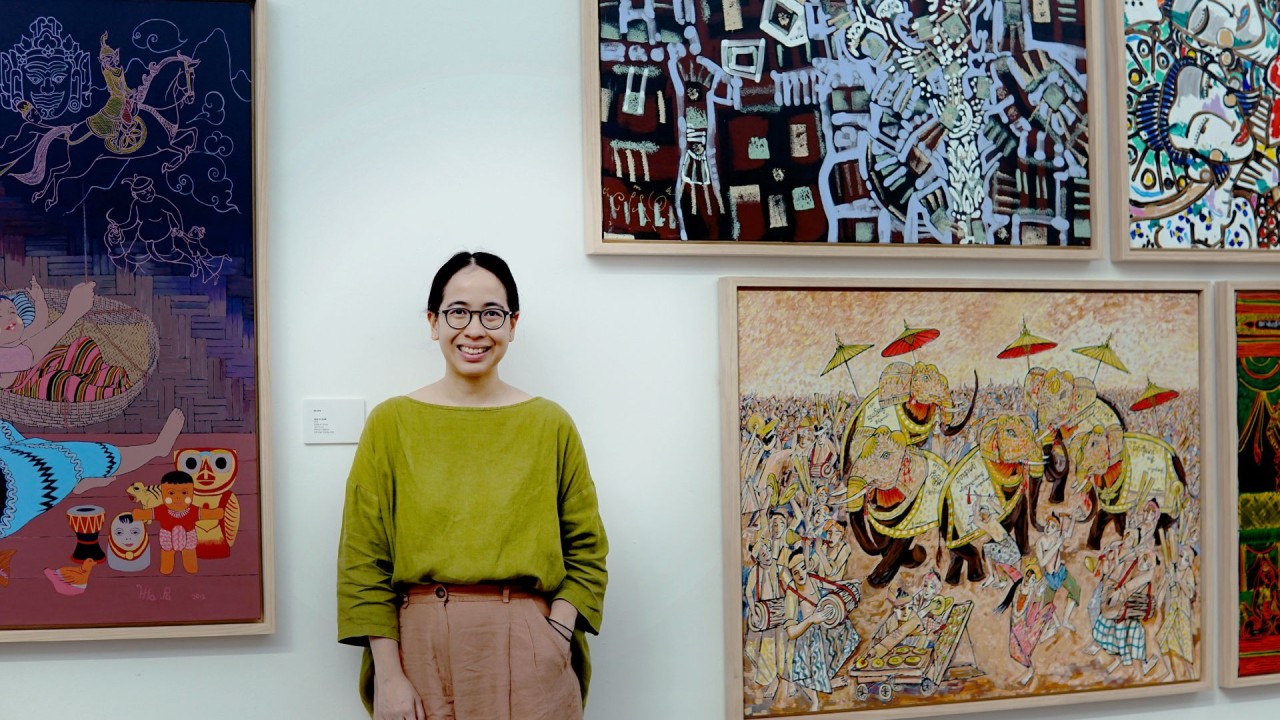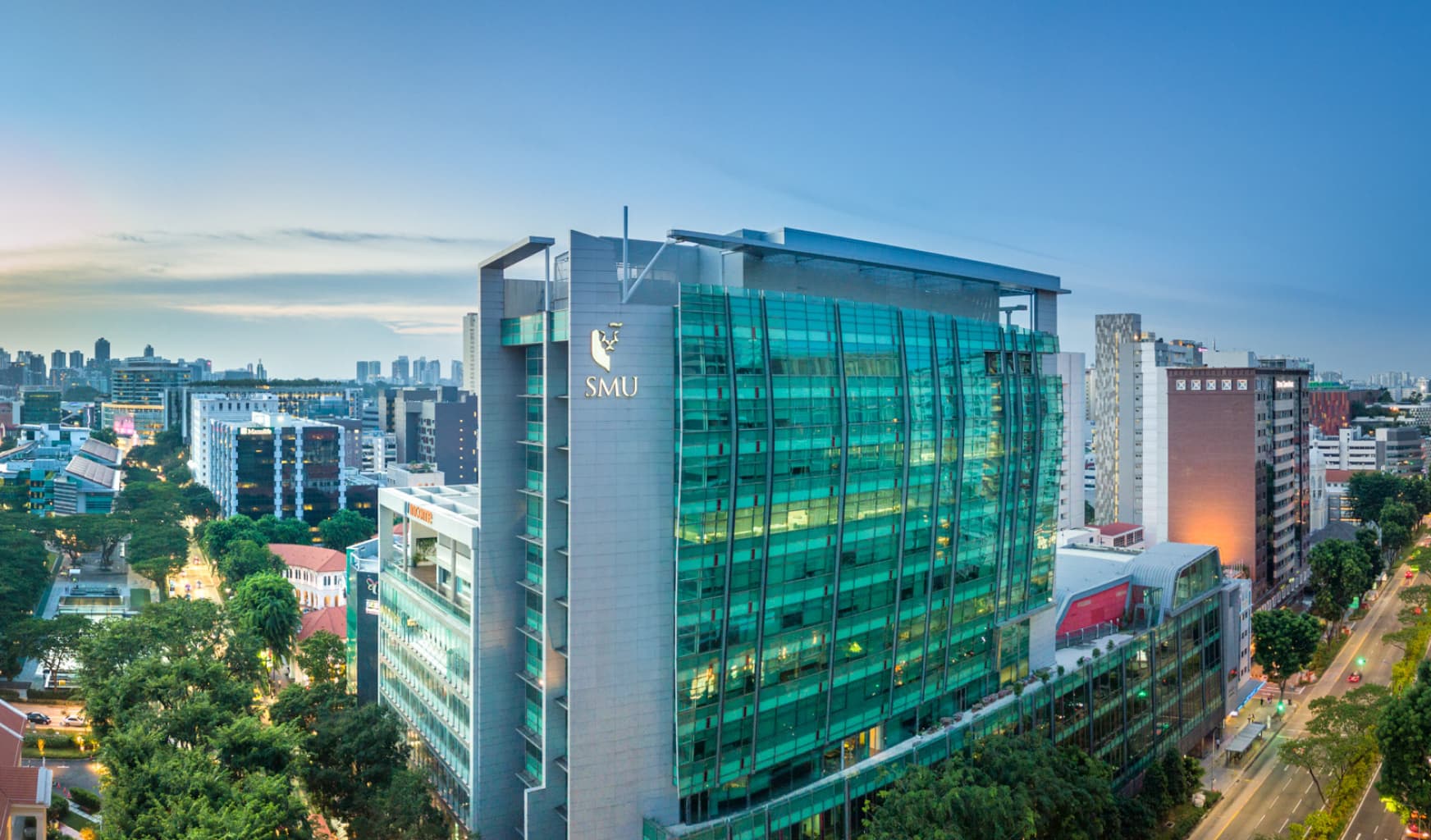Why I Enjoy Working at the SMU Libraries as an Art Curator
Kamiliah Bahdar, Art Curator at the SMU Libraries, reflects on her role in managing the institution’s art collections, and how the library’s visual art programmes enrich the student experience. She also discusses memorable exhibitions she has worked on, how her passion has influenced her work, and the intersections of art and academic inquiry.
Have you ever wondered about how the art pieces and paintings around campus were curated?
In this last instalment of the “Why I Enjoy Working at the SMU Libraries” series, we speak to Kamiliah Bahdar, Art Curator at the SMU Libraries. She shares more about her role in managing the institution’s art collections, and enriching the student experience with artistic and cultural programming. She also discusses the intersection of art, education, and the library’s mission.
What led you to the role of curator at SMU Libraries?
Prior to joining SMU Libraries, I was an independent curator. I had worked on numerous exhibitions across different platforms, from commercial galleries to artist-run spaces.
The prospect of working with a collection for a longer term, engaging with the same collection alongside different people, was not something afforded to me as a freelance curator previously.
I have also always been interested in art outside of the white cube or conventional art spaces, so I was intrigued with the idea of working with a campus collection. This led me to join SMU Libraries as an Art Curator.
Can you share a memorable exhibition or art project you've worked on at the library?
In 2021 and 2022, we held two editions of Annotations, an exhibition series comprising photographic narratives by SMU students, across undergraduate and postgraduate programmes. These students had come through an open call, and spent a month with a mentor from Objectifs Centre for Photography & Film to sharpen their visual storytelling skills prior to the exhibition launch.
In both editions, I enjoyed the surprise of witnessing their journey in translating their experiences, from loneliness to joy, into the photo collections. With the library being a space for students, it’s heartening to have them claim the space and connect with their peers through their photo projects.
How do you see the role of art within the university library setting?
We have over 500 artworks in the SMU Art Collection, with many sub-collections. In the context of an academic library, some of these collections serve as material documents to give insights into the socio cultural milieu behind the creation of the work.
For instance, Chua Ek Kay's Street Scenes explores Singapore’s rapid urban development and the concomitant experience of alienation. Meanwhile, paintings from Myanmar in the Thukhuma Collection surveys the culture and society of Myanmar, and the mixed feelings of hope, concern, and scepticism of reforms in the 2010s. The newest loan collection of paintings by Yugoslavia-born Singapore artist Milenko Prvački is part biographical in its attempts to construct memories from fragments.
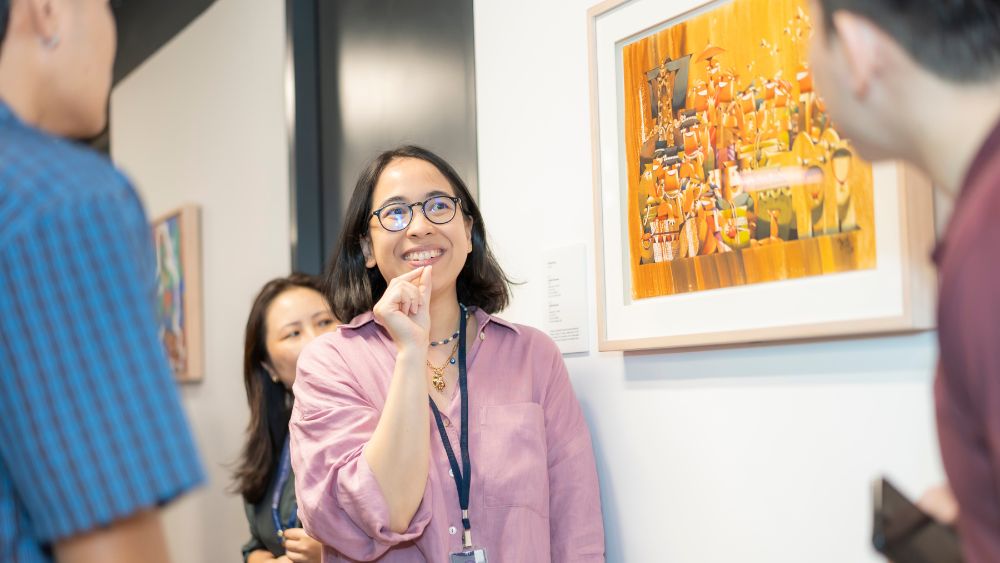
What challenges do you face when making exhibitions?
The main challenge for me comes at the start, when conceptualising the exhibition. This entails understanding the relevance of the intentions and messages to be conveyed when putting up a certain exhibition at a specific time, amidst the current affairs of the world.
How do you select pieces for an exhibition?
Using a recent example of new artworks now displayed on the fifth floor of the School of Economics, there is the Milenko Prvački collection in one wing, and the new paintings in the Thukhuma Collection in the other wing.
The former is a loan collection from the artist, who has a large catalogue of works. Since we’re loaning a sizeable number of works (43 to be exact), I wanted to use it as an opportunity to feature his practice over 20 years, allowing viewers to glean the transformation of his work across time.
In the latter collection of over 20 paintings in the other wing, they were selected to represent the various genres and subjects in the Thukhuma Collection, from landscapes by Yan Naing Oo and Tamalar, to works with scenes from urban life like Crowded Life (2014) by Nay Aung Shu and Teashop (2013) by Sue Htet Aung.
How does art enhance the academic and cultural life of the SMU community?
In the first half of 2025, the SMU Libraries presented three exhibitions where artistic inquiry was informed by academic discourse, and in turn, these exhibitions may add to the academic discourse.
Two of these exhibitions were initiated by students who wanted to explore through a different lens for their academic papers.
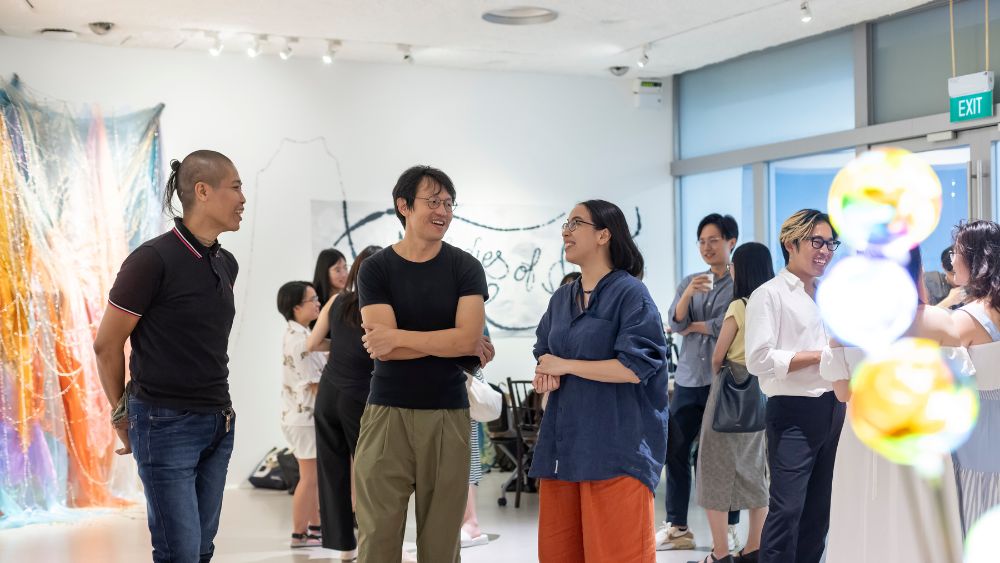
Renee Tan wrote a senior thesis as part of the College of Integrative Studies' Individualised Second Major programme. Her art installation Maladies of Rest was shaped by her senior thesis on urban beauty and infrastructure in Metro Manila, blending academic research with creative exploration. Over the course of her fieldwork, her encounters of restfulness, restlessness, and unrest prompted her to design an art installation where visitors can explore what restfulness and beauty might be and feel like.
Hong Huazheng, aka H, is undertaking a postgraduate degree in Master of Sustainability. He developed a documentary photography project The Light Between Us in tandem with his academic research for Development, Poverty, and Sustainability, a course on the integral connection between reducing poverty and hunger, and fostering sustainable development. Using double exposure, his photo essay explores the tension between prosperity and precarity in contemporary Singapore, revealing hidden inequalities within a wealthy society.
The third exhibition, an arrangement of/for random words by Artist-in-Residence jo+kapi, explores how words, meanings, and large language models (LLMs) intersect. Inspired by a conversation with a faculty specialising in law and computer science, it reflects on machine-generated language and the breakdown of meaning. Anchoring the exhibition is a screen-based installation Enzyme 2.0. The exhibition also includes a bookshelf and research stations with references from Borges to a 1994 internet art, and a table displaying ephemeras from a two-day symposium. This highlights the expansive transdisciplinary nature of art and artistic inquiry.
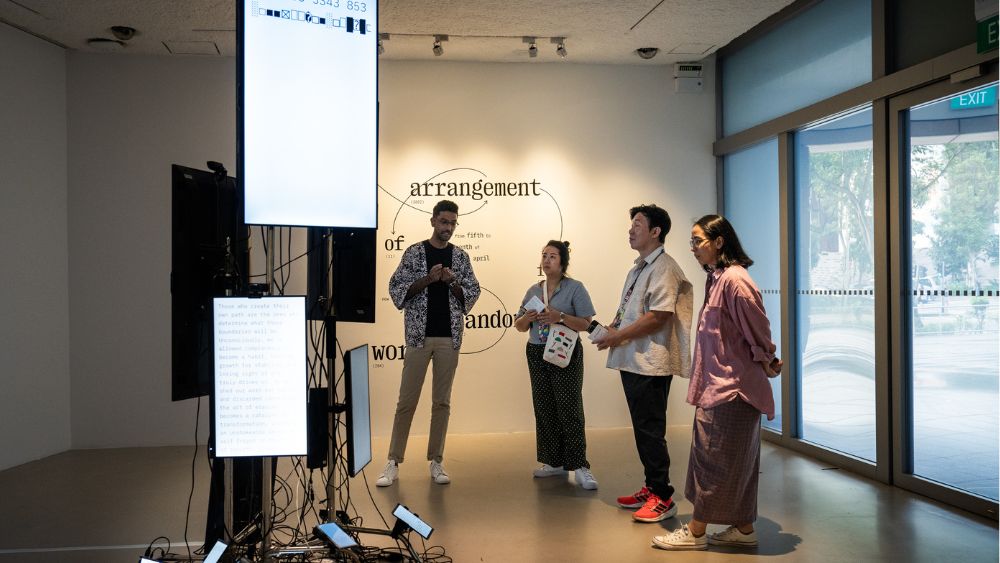
Are there any personal interests or experiences that influence your curatorial approach?
I am personally interested in building support structures and organising spaces for the community to come together to support and exchange ideas.
This interest has influenced the art programmes in the Libraries, from the Artist-in-Residence programmes that support artistic research, to the programmes that accompany exhibitions.
For instance, for the Overgrowth Artist-in-Residence closing programme in 2024, Priyageetha Dia convened a workshop with curator Syaheedah Iskandar, researcher-writer Nurul Huda Rashid, and art and creative collective TO NEW ENTITIES for a discussion on speculative narrative, and collective imagination and resistance.
How do your personal passions, such as an interest in a specific art form or cultural movement, shape the exhibitions you curate at SMU Libraries?
It’s hard to escape my formal education in anthropology, and media and communication studies. These disciplines have strongly influenced my view of art and art-making as forms of cultural production that’s never decoupled from culture, history, and politics—matters which I often engage, respond, or address in exhibitions I have curated.
Learn more about how SMU Libraries can support and enrich your academic inquiry here.



